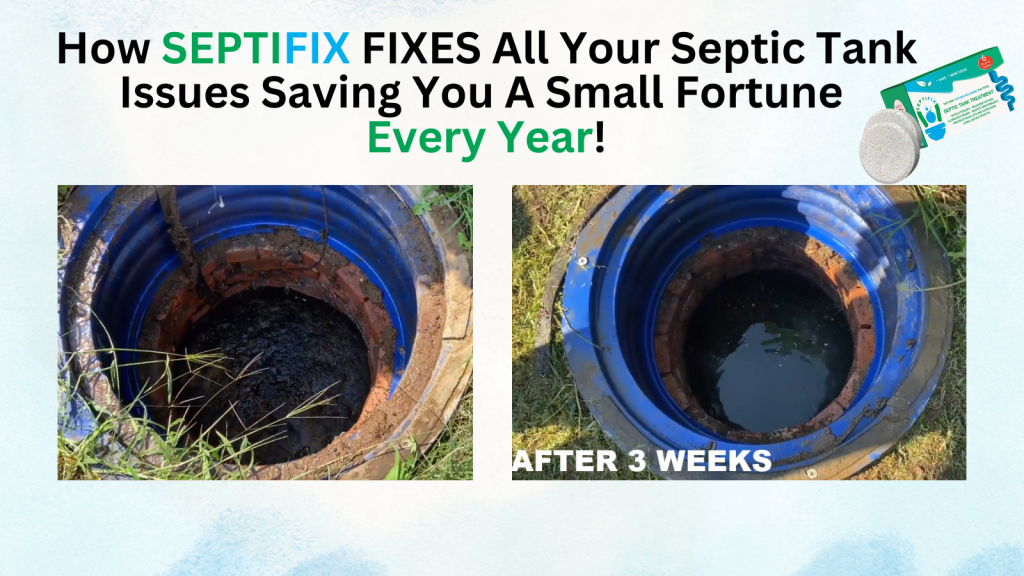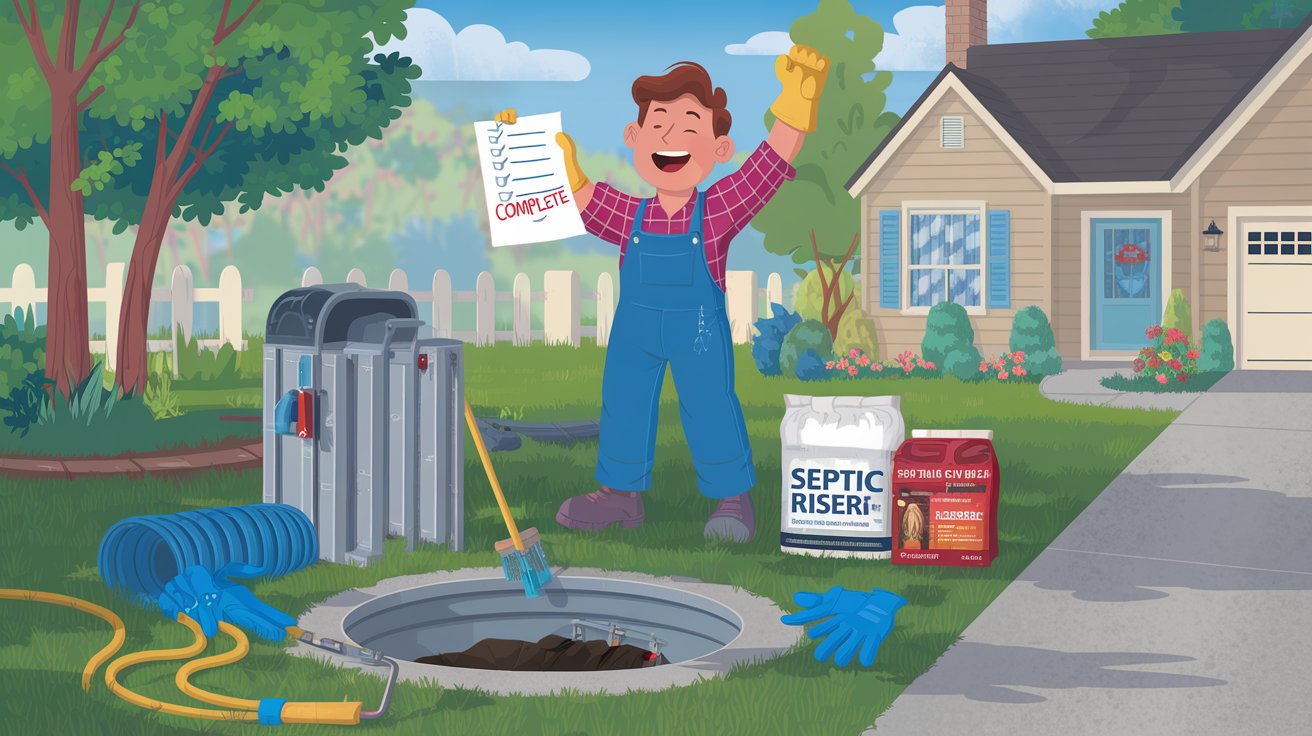Overview of Septic Tank Costs: A Guide to Installation, Maintenance, and Repairs
Septic systems are essential for many homes, particularly those located away from municipal sewer systems. But when considering septic systems, one of the most common questions homeowners ask is, “What are the costs involved?” Septic tank costs can vary greatly depending on several factors like size, materials, and maintenance needs. In this guide, we’ll break down the expenses related to installation, maintenance, and repairs, helping you make informed decisions about your septic system.
Table of Content
- Overview of Septic Tank Costs: A Guide to Installation, Maintenance, and Repairs
- Factors Influencing Septic Tank Costs
- Costs of Septic Tank Installation
- Septic Tank Maintenance Costs
- Costs of Septic Tank Repairs and Replacements
- How to Save on Septic Tank Costs
- Choosing the Right Contractor
- FAQs about Septic Tank Costs
- Septifix
- Septic Permit Links by State
Factors Influencing Septic Tank Costs
Size and Capacity of the Septic Tank
One of the most significant factors affecting septic tank costs is its size. Septic tanks are sized according to the number of people in a household or the number of bedrooms in a home. For example:
- Small Tanks (500–750 gallons): Suitable for 1–2-bedroom homes; cost ranges between $1,000 and $2,000.
- Medium Tanks (1,000 gallons): Ideal for 3–4-bedroom homes; prices fall between $1,500 and $3,000.
- Large Tanks (1,500 gallons or more): Designed for larger homes or properties with higher water usage; costs range from $3,500 to $5,000 or more.
Larger tanks require more materials and labor for installation, increasing costs. However, choosing the correct size ensures your system functions efficiently, avoiding future expenses..
Materials Used in Construction
Septic tanks are made from various materials, each with its pros, cons, and price range:
- Concrete Tanks: Durable and long-lasting but heavier and costlier to install. Average price: $1,200–$2,500.
- Fiberglass Tanks: Lightweight and resistant to rust or corrosion. Average price: $2,000–$3,000.
- Plastic Tanks: Affordable and easy to install but less durable over time. Average price: $1,000–$2,000.
Selecting the right material for your tank depends on your budget and the environmental conditions of your property.
Location and Soil Conditions
The cost of installation is also influenced by the soil and terrain of your property. If the soil is rocky or has poor drainage, additional excavation and soil preparation may be required, increasing labor costs. In some cases, installing a mound or alternative system may be necessary, which can add $5,000 or more to the total cost.
Costs of Septic Tank Installation
Installing a septic tank is a significant investment, but it’s crucial for homes that rely on private waste management. On average, installation costs range between $3,000 and $10,000, depending on the factors mentioned earlier.
Average Cost Breakdown
The installation costs typically include:
- Tank Material and Purchase: $1,000–$3,500.
- Labor and Excavation: $1,500–$5,000.
- Additional Components: Distribution boxes, piping, and gravel can add $500–$1,500.
Permits and Inspections
Local regulations often require permits and inspections for septic systems. Permit fees vary by region, usually ranging from $250 to $1,000. These are necessary to ensure compliance with environmental standards.
Septic Tank Maintenance Costs
Maintaining your septic system is critical for its longevity and efficiency. Regular upkeep prevents costly repairs or system failures.
Pumping and Cleaning
Septic tanks should be pumped every 3–5 years, depending on household size and usage. Pumping services cost between $300 and $600. Neglecting this essential task can lead to sludge buildup, which may damage the tank or cause backups.
Routine Inspections
Annual inspections help identify potential problems before they escalate. A professional inspection costs between $100 and $300. Catching minor issues early can save you thousands in future repairs.
Additives and Treatments
Septic additives are marketed as a way to break down solids and enhance system performance. While not always necessary, they can cost $10–$50 per treatment. For example, biological additives can help maintain balance in the tank, particularly in high-usage households.
Costs of Septic Tank Repairs and Replacements
Even with proper care, septic systems can experience issues over time. Repair and replacement costs depend on the extent of the damage.
Common Repairs
Minor repairs, like fixing leaks or unclogging pipes, might cost $200–$1,500. For example:
- Repairing a cracked tank: $500–$1,000.
- Replacing a baffle: $300–$600.
Replacing a Septic Tank
If your septic tank is beyond repair, replacing it can cost between $5,000 and $15,000. Factors like size, materials, and labor contribute to this significant expense.
How to Save on Septic Tank Costs
Taking a proactive approach to septic tank maintenance and care can significantly reduce your long-term expenses. Investing time and effort into preventative measures and making informed choices about contractors are key steps to ensure your septic system operates efficiently and avoids costly repairs. Below, we’ll dive deeper into two critical areas of savings: preventative maintenance and choosing the right contractor.
Preventative Maintenance
Preventative maintenance is the foundation of a healthy and cost-effective septic system. By adopting simple habits and performing regular upkeep, you can avoid costly repairs and replacements. Here’s how you can keep your septic system running smoothly and avoid major expenses:
1. Regular Pumping and Cleaning
One of the most important maintenance tasks for your septic tank is periodic pumping. Over time, solid waste accumulates in the tank, which can cause blockages, leaks, and system failure. Pumping your septic tank every 3–5 years is crucial to prevent these issues. Failing to pump your system regularly could result in backup problems that require expensive repairs.
Tip: Pumping costs typically range from $300 to $600 per service, a small investment compared to the cost of replacing a damaged tank.
2. Watch Your Water Usage
Water is the primary resource for septic systems. The more water you use, the harder your system works, and overloading the system can lead to failures. Here are some tips to conserve water and extend the life of your septic system:
- Fix leaks in faucets and toilets as soon as they appear.
- Install low-flow faucets and showerheads to reduce water waste.
- Space out laundry loads, rather than doing several loads in one day, to avoid overloading the system.
- If possible, reduce the number of baths and showers per week.
3. Avoid Flushing Non-Degradable Items
Your septic tank is designed to handle organic waste and water. Flushing non-degradable items such as wipes, paper towels, feminine hygiene products, and grease can clog pipes and disrupt the natural breakdown process in your tank. These items can contribute to blockages and cause damage to your system, leading to expensive repairs.
Tip: Use a waste disposal bin for non-biodegradable items instead of flushing them.
4. Maintain Your Drain Field
Your drain field is critical for the filtration of wastewater from the septic tank. To keep it working efficiently and prevent unnecessary damage:
- Avoid parking cars or heavy machinery over the drain field.
- Do not plant trees or shrubs near the system, as their roots can infiltrate pipes and cause blockages.
- Keep the area around the drain field clear of debris and heavy vegetation.
Tip: Regularly check for signs of standing water or foul smells around the drain field, as these can indicate a problem with the system. If you notice any, it may be time to schedule a professional inspection.
5. Use Septic-Friendly Additives Sparingly
There are many additives marketed as solutions for septic tank maintenance. Some septic tank treatments claim to help break down solids and maintain bacterial balance. However, while biological additives can help in some cases, they are not always necessary for every system. Relying too heavily on additives can sometimes lead to more harm than good, as they can upset the natural biological process of decomposition in the tank.
Tip: Use additives only when recommended by a professional, and avoid overuse.
By staying on top of your septic system’s maintenance, you can prevent larger, more expensive issues down the road. With these steps, you’ll not only save money but also extend the life of your system.
Choosing the Right Contractor
Selecting the right contractor is one of the most important decisions you can make when it comes to installing, maintaining, or repairing your septic system. A reputable contractor ensures high-quality work and helps you avoid costly mistakes. Here’s how you can choose a contractor who will save you money and provide peace of mind:
1. Verify Certifications and Licenses
In many areas, contractors working on septic systems are required to have specific licenses and certifications. Make sure your contractor is properly licensed and has the necessary training to handle the job. This guarantees that they are up-to-date with local codes, regulations, and best practices. Hiring an unlicensed contractor may result in subpar work that can cause system failures and lead to costly repairs.
Tip: Ask to see proof of the contractor’s certifications and licensing before starting any work.
2. Ask for References and Reviews
Don’t rely on online reviews alone. It’s crucial to ask contractors for references from past clients who had similar projects. Speaking directly to previous clients allows you to hear about their experiences and gives you an idea of the contractor’s reliability and quality of work.
Tip: Check multiple sources for reviews, including Google, Angie’s List, or the Better Business Bureau. If possible, visit past projects to inspect the quality of the work firsthand.
3. Get Multiple Quotes
Obtaining quotes from several contractors allows you to compare prices and services. However, don’t simply go with the cheapest option. A low price could indicate that the contractor is cutting corners or offering a subpar level of service. Prioritize value over price, considering factors like the contractor’s experience, reputation, and the thoroughness of their assessment.
Tip: When requesting quotes, ask for a detailed breakdown of costs, including labor, materials, and any permits or additional fees.
4. Look for Experience and Specialization
A contractor with extensive experience in septic system installation, maintenance, and repairs will likely provide better results. Experienced professionals are also more likely to identify potential issues early and provide lasting solutions. Furthermore, a contractor specializing in septic systems will have the latest tools and techniques for dealing with more complex problems, such as challenging soil conditions or complex repairs.
Tip: Ask the contractor about their specific experience with septic systems, and ensure they are knowledgeable about your specific type of system (e.g., gravity-fed, aerobic, etc.).
5. Check for Insurance and Warranties
Hiring a contractor who carries liability insurance protects you in case of accidents or damage during the job. Additionally, a reputable contractor should offer a warranty on their work, which can save you money in case issues arise after the project is completed.
Tip: Always request written documentation of insurance coverage and warranties. This ensures that you’re covered if something goes wrong.
6. Trust Your Instincts
Lastly, trust your gut. If something about the contractor feels off—whether it’s their communication, professionalism, or the way they handle your questions—it’s okay to look for other options. A trustworthy contractor will be transparent, communicative, and eager to help you understand the process.
Tip: Be cautious of contractors who offer prices that seem too good to be true or are unwilling to answer your questions clearly.
FAQs about Septic Tank Costs
How much does it cost to install a new septic system?
The cost of installing a septic system ranges from $3,000 to $10,000 on average, depending on factors like tank size, materials, and local regulations.
What are the ongoing costs of maintaining a septic system?
Annual maintenance costs typically include pumping ($300–$600 every 3–5 years) and inspections ($100–$300 annually).
Can I install a septic tank myself to save money?
DIY installation is not recommended. Septic systems require professional design and permits to meet health and environmental standards.
How can I tell if my septic tank needs repair or replacement?
Signs include slow drainage, foul odors, or pooling water near the drain field. A professional inspection can confirm whether repairs or replacement are necessary.
Are there alternatives to traditional septic systems?
Yes, alternative systems like aerobic treatment units or mound systems can be used in areas with poor soil conditions. However, these options often come with higher upfront costs.
Conclusion
Understanding septic tank costs is crucial for managing this essential home infrastructure. From installation and maintenance to repairs, being informed can help you plan and save money in the long run.
For more tips on septic system care and cost-saving strategies, explore our comprehensive guides and product reviews!
Pumping Laws and Regulations: Local and Regional Rules Governing Septic Tank Pumping and Waste Disposal Pumping Laws and Regulations
Directory | Utah Septic Service Providers : Best Professionals
Homemade Septic-Safe Cleaning Solutions: DIY Recipes for Environmentally Friendly Septic Maintenance
Septifix for Odor Removal: How Septifix Tablets Can Effectively Eliminate Septic Odors
Directory | Texas Septic Service Providers Part 3
How to Save on Septic System Costs
Directory | Texas Septic Service Providers | Part 2
Directory | Texas Septic Service Providers | Part 1
Septifix










